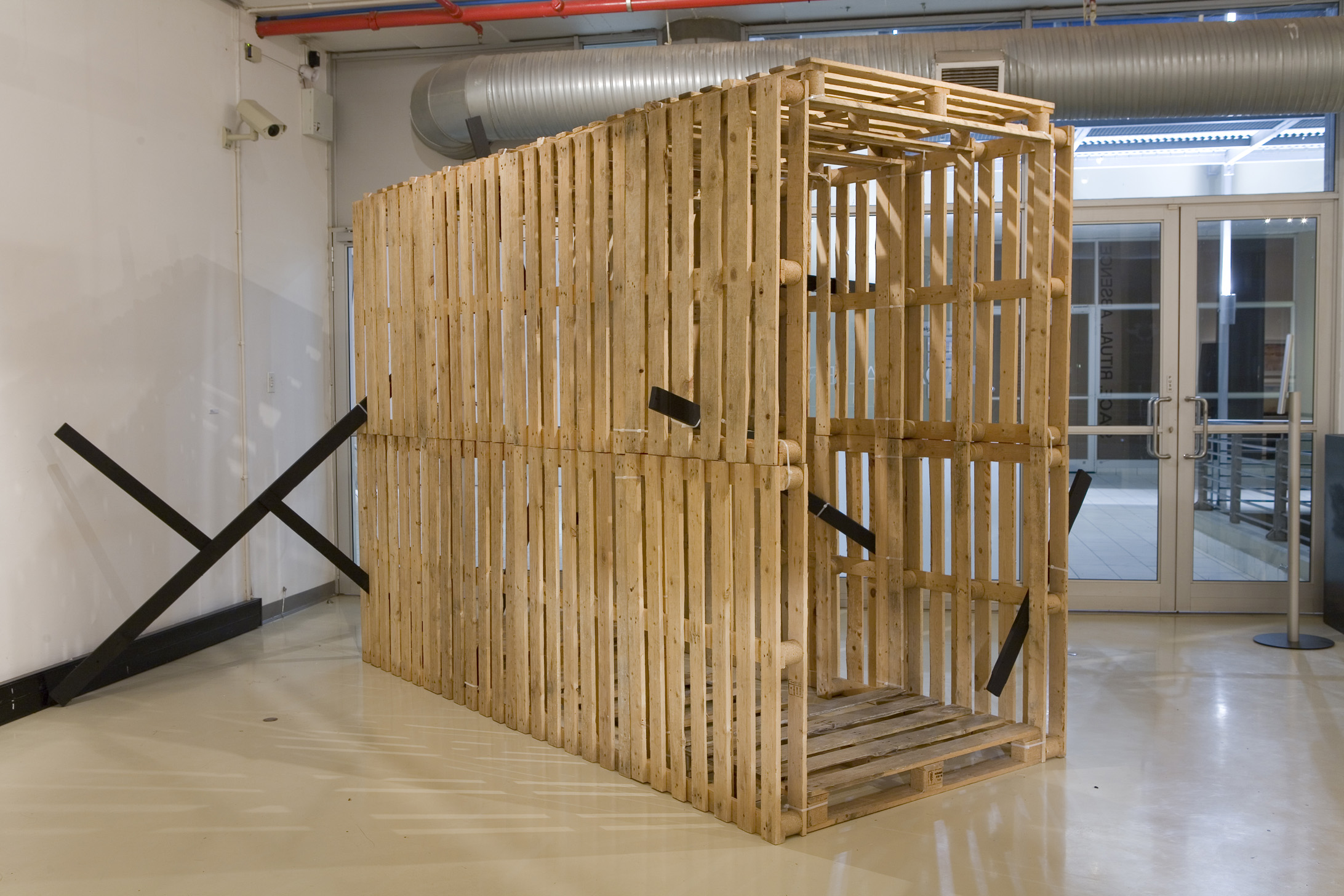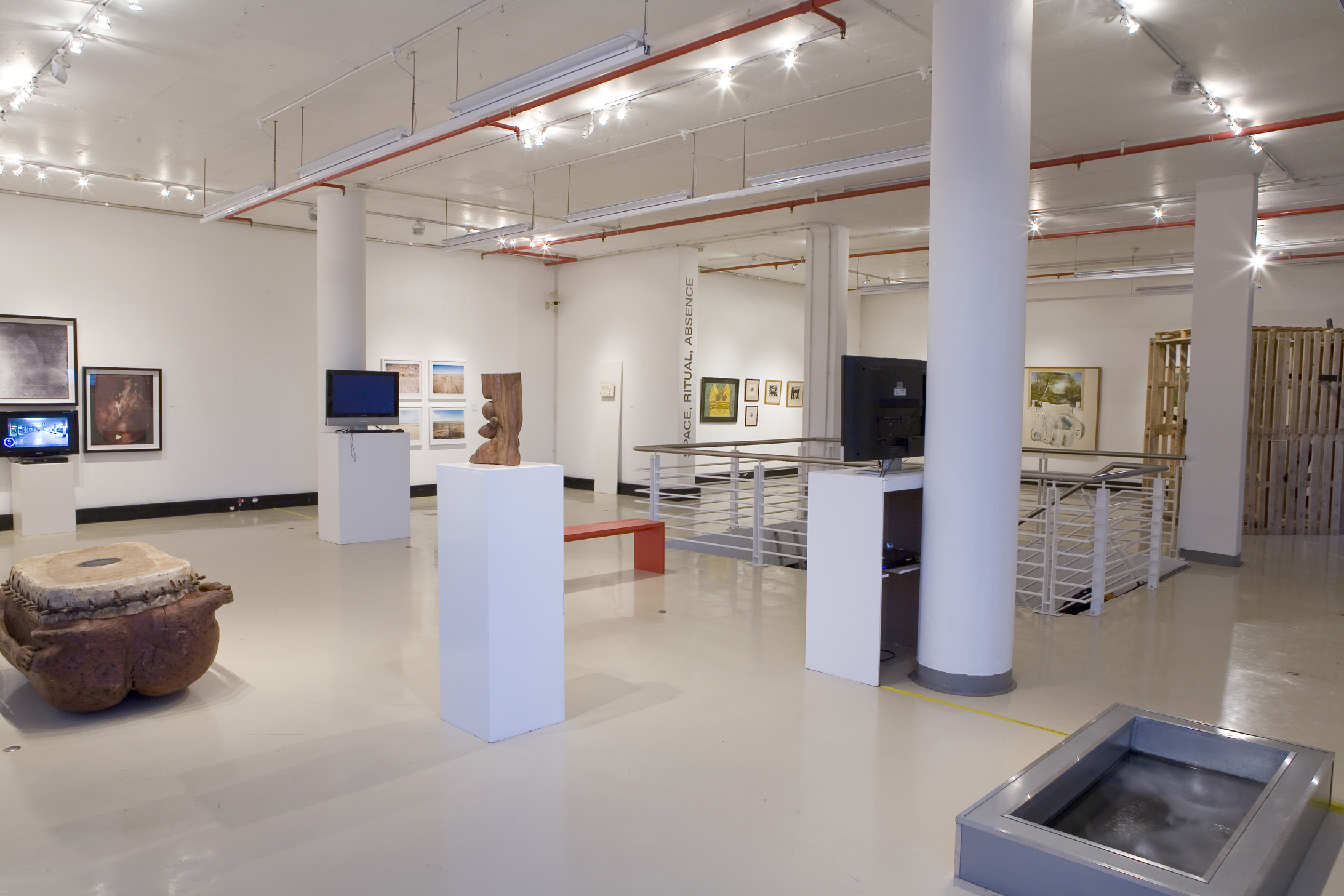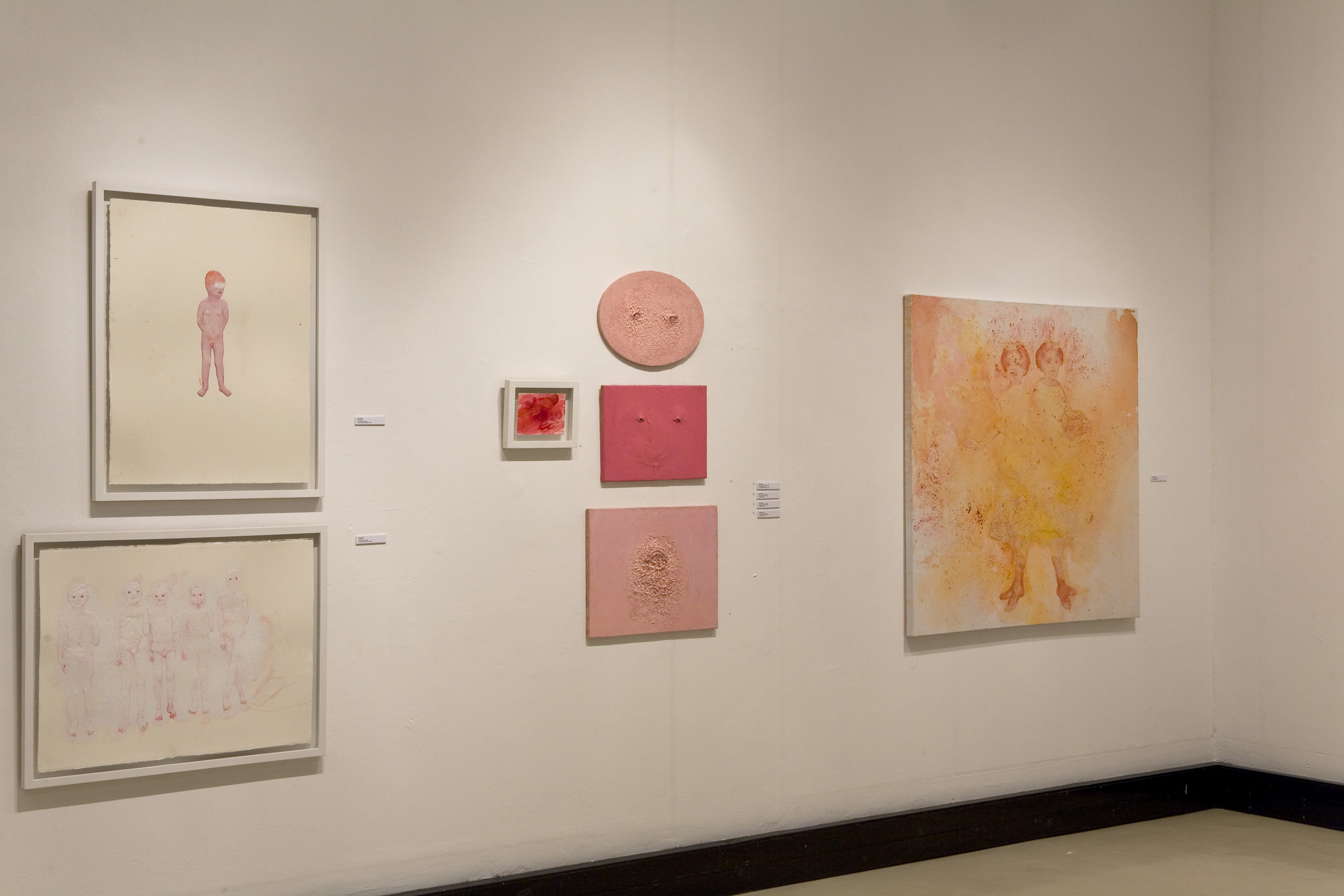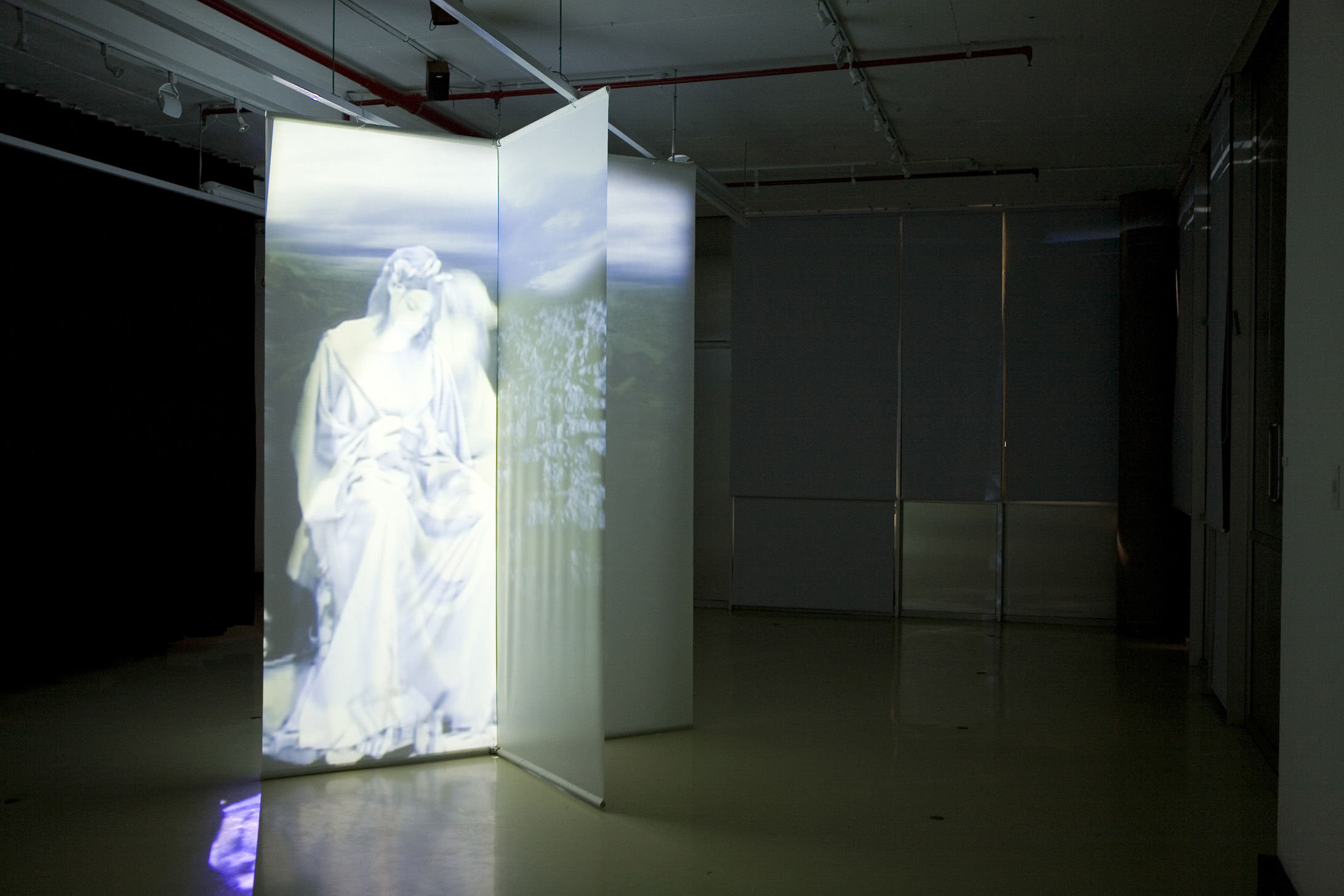SPACE, RITUAL, ABSENCE: THE LIMINAL IN SOUTH AFRICAN ART
CURATED BY JAMES SEY IN COLLABORATION WITH VIAD
10 March - 1 April, 2011 | FADA Gallery, University of Johannesburg
SPACE, RITUAL, ABSENCE
Curated by James Sey and Leora Farber
The exhibition Space, Ritual, Absence accompanied the VIAD-hosted colloquium held at the University of Johannesburg on 10-11 April 2011. The work was drawn together curatorially by a common strand of affinity with, or reflections on, certain liminal positions and social, political and/or aesthetic states. The guiding curatorial thematic was a conscious engagement with counter-cultural positions as a mode of institutional critique and aesthetic alternative, or with a more abstruse and personal iconography and approach to making aesthetic meaning out of a liminal and magically charged ‘interzonal’ state.
The ‘liminal’ refers to the threshold; that which exists in an in-between state, not fully realised, fully understood or fully accepted into the socius. Things and beings that exist in a liminal state are properly at the margins, often not accorded a full legal, epistemological or psychological identity. As such they acquire a range of different meanings and functions in society – attracting power, magic, danger and mystery, but also suspicion and repressive control. Liminal spaces are those in which the ‘normal’ rules and mores of society are suspended, thus allowing for transformation and new confluences to happen. They are also transit zones, such as hotels and airports, where people move from one place and state to another, and are therefore subject to different rules and controls to those which exist in society. Furthermore, liminal zones are spaces of spiritual or social power and spaces outside of ‘normal’ social structures. Such zones include disputed political territories, asylums and internment camps, shrines, caves, seashores and crossroads. They may attract dispute and contestation, but can also represent spaces in which no political or social decision can be taken until having exited the liminal zone.
Considered from the point of view of these epistemological categories of liminality, South African visual art, especially in its contemporary guise, might be fruitfully reappraised as a unique treasure trove of the liminal. In the South African context, the liminal is a penetrating means to understand South African art because of its inherent opposition to the notion that the other is an opaque unknowable; that an inherent barrier exists between the experiencing self and the close but distant other; between the mad and the sane; or the imperial subject and its colonised objects. The aim of this exhibition was emphatically not to fit artists into pre-existing categories of the liminal and liminal experience, but rather, to interrogate the notion that the liminal might be a useful lens through which to view South African art from a critical and historical perspective.
The reasons for this are clear. South African art history struggles most with the establishment and maintenance of a clear identity for the country’s art, caught as it was for decades between apartheid state-sanction and underground agitprop and resistance. By definition, in such a scenario, artists working in conceptual modes, or those influenced by movements elsewhere, as well as those artists (usually black artists) perforce outside of institutional systems, were in liminal states of being and creativity. The mode of the creation of art outside of the institution which befell many South African black artists in the apartheid era, a non-professional impulsion which was, by definition, outside of the framework defining it as art and its creators as artists, is definitive of much of the experience of the liminal elsewhere in the world. The affinities between this subaltern position for many artists, as well as those working within the art system but who were counter-intuitive or perhaps actually reveled in and used their position as liminal figures in the creation of work, is little explored or understood.
These affinities and anti-social or ‘anti-aesthetic’ – to subvert Hal Foster’s (1983) provocative term – formations in South African art history, of course take place in a larger social context. This is the background of separate definitions of liminality, madness and outsiderness dictated by race, of separate institutions to cater for those differences, of different and parallel epistemologies, even, eugenically ordered to exclude blacks and reduce them to homosacer – that liminal state par excellence – in apartheid South Africa. Art, as a discourse and a practice, was not exempt from these exclusionary strategies, and, until now, South African art history has never really considered what such phenomena might mean for the country’s artists who were affected by it in various ways.
The exhibition comprised works borrowed from collections (such as those by Wopko Jensma, Neil Goedhals, Kendell Geers, Jackson Hlungwane, Minnette Vári and Nadine Hutton) as well as new work commissioned for the show. Other participating artists were Penny Siopis, Berni Searle, Rat Western, Steven Cohen, Dineo Bopape, Claire Jorgensen, James Sey, Brent Meistre, Serge Alain Nitegeka, Joni Brenner and Samson Mudzunga.
Source cited
Foster, H. 1983. The anti-aesthetic: essays on post-modern culture. San Francisco: The Bay Press.

































